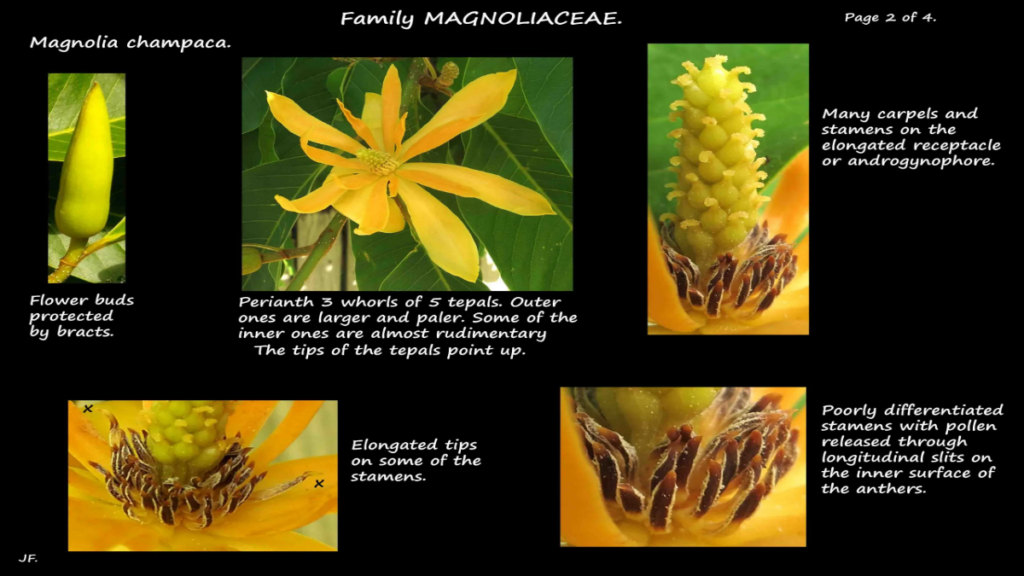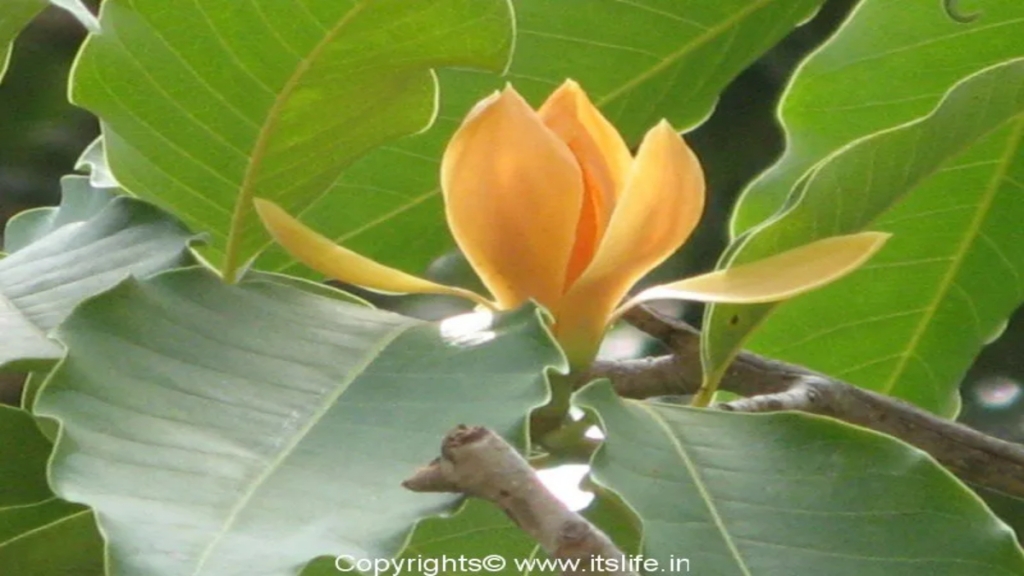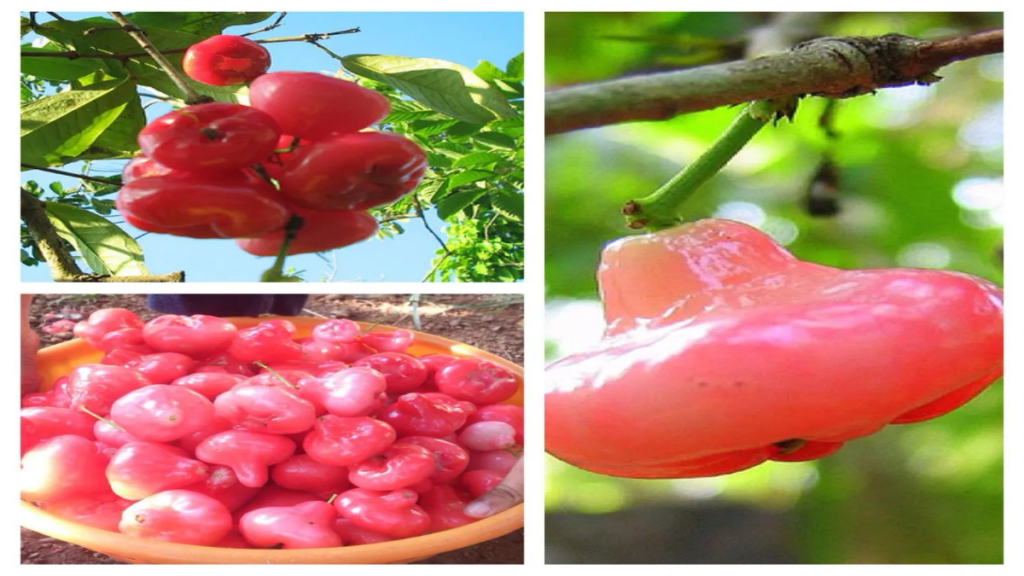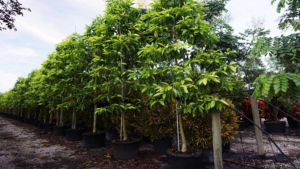Champaka flower, also known as Magnolia champaca, is prized for its fragrance. Explore its cultural significance, uses, and health benefits. 🌸✨
Introduction: What is the Champaka flower?
Let’s delve into the captivating world of the Champaka flower (also known as Magnolia champaca). This fragrant blossom holds a special place in various cultural and spiritual contexts. Here’s a detailed exploration:
Champaka Flower: Fragrance and Beauty
1. Etymology and Vernacular Names
- The scientific name Magnolia champaca originates from the Sanskrit word “campaka” (pronounced [tɕɐmpɐkɐ]), which beautifully captures its essence.
- In English, it goes by several vernacular names:
- Joy Perfume Tree
- Yellow Jade Orchid Tree
- Fragrant Himalayan Champaca
2. Distribution and Habitat
- Native to the Indomalayan realm, Champaka thrives in South Asia, Southeast Asia, and southern China.
- It graces tropical and subtropical moist broadleaf forests at elevations ranging from 200 to 1,600 meters (660 to 5,250 feet).
- Countries where it flourishes include:
- Maldives
- Bangladesh
- Cambodia
- China
- India
- Indonesia
- Malaysia
- Myanmar
- Nepal
- Philippines
- Thailand
- Vietnam
- And now, an isolated population was discovered in Yemen, making it the only Magnoliaceae species in the Arabian Peninsula.
3. Description
- Height: In its native range, Champaka can grow up to 50 meters (160 feet) or even taller.
- Trunk Diameter: Its sturdy trunk can reach up to 1.9 meters (6.2 feet) in diameter.
- Crown Shape: The tree boasts a narrow umbelliform crown.
- Flowers: The strongly fragrant flowers bloom from June to September in varying shades of cream to yellow-orange.
- Each flower has 6-12 petals and exudes an irresistible aroma.
- The obovoid-ellipsoid carpels produce 2-4 seeds during September to October.
4. Cultural Aspects and Spiritual Significance
- Buddhism: The Champaka flower symbolizes purity of the mind and represents the Buddha. It is used in Buddhist prayer offerings and during meditation due to its calming fragrance.
- Indian Worship: Since time immemorial, the Champa flower has been an integral part of Indian spiritual worship. Its distinct aroma infuses sacred spaces with reverence.
5. Practical Uses
- Fragrance: Beyond its spiritual significance, the Champaka flower’s fragrance has practical applications.
- Timber: The tree’s timber finds use in woodworking.
In summary, the Champaka flower enchants with its beauty, fragrance, and cultural significance. Whether adorning temple courtyards or gracing home gardens, it remains a timeless favorite. 🌸✨

How can I grow Champaka at home?
Growing Champaka (Plumeria), also known as Frangipani, is a delightful endeavor. These tropical flowering plants are prized for their fragrant blossoms. Here are some care tips and steps to cultivate Champaka at home:
- Choose the Right Location:
- Sunlight: Place your Champaka in a bright spot, but avoid direct sunlight, especially during scorching hours.
- Temperature: They thrive in warm climates, so ensure a minimum temperature of 60°F (15°C).
- Soil and Potting Mix:
- Use a well-draining cactus potting mix or a blend of garden soil and sand.
- Ensure the pot has good drainage holes.
- Watering:
- Regular Watering: Water your Champaka regularly, especially during hot weather.
- Allow Soil to Dry: Let the soil dry out slightly between waterings to prevent root rot.
- Fertilization:
- Feed your Champaka with a balanced fertilizer every month during the growing season (spring to fall).
- Opt for a fertilizer with an N-P-K ratio of 10-10-10 or similar.
- Pruning and Shaping:
- Pinch back the tips of stems to encourage bushier growth.
- After flowering, prune your Champaka to promote new growth.
- Pest and Disease Control:
- Be vigilant for pests like aphids and whiteflies. Treat them promptly.
- Keep an eye out for signs of diseases such as leaf spots.
- Propagation:
- Propagate Champaka through stem cuttings:
- Take a healthy stem cutting (about 6-8 inches long) with a few leaves.
- Let it dry for a day or two.
- Plant the cutting in well-draining soil.
- Keep it out of direct sunlight for 15-20 days.
- Once it develops roots, gradually introduce it to full sunshine.
- Propagate Champaka through stem cuttings:
- Blooming:
- Champaka will begin to bloom in its second year of growth.
- Enjoy the stunning, fragrant flowers!
Remember, Champaka trees can grow to be 5-15 feet tall and are excellent for patio pots. Their elegant blooms and intoxicating fragrance make them a delightful addition to any garden. 🌸✨

What are some common Champaka varieties?
Champaka (Magnolia champaca) comes in several varieties and hybrids. Let’s explore some of them:
- Magnolia (Michelia) champaca var. champaca:
- Known as Huang lan in Chinese.
- Can grow up to 30 meters (98 feet) tall.
- Documented in China.
- Magnolia (Michelia) champaca var. pubinervia:
- Referred to as Mao ye mai huang lan in Chinese.
- Can reach heights of 50 meters (160 feet) or taller.
- Also documented in China.
These varieties showcase the diversity within the Champaka family. Whether you’re a gardener or simply an admirer of beautiful blooms, exploring these variations can be a delightful journey. 🌸✨
Fragrance of Champaka:
The Champaka flower (Magnolia champaca) is renowned for its captivating fragrance. Let’s explore its aromatic allure:
- Scent Profile:
- The Champaka emits a rich, sweet, and heady fragrance that lingers in the air.
- Imagine a blend of jasmine, orange blossom, and fruity undertones—a harmonious symphony of scents.
- Intensity:
- The fragrance is intensely powerful, especially during the flowering season.
- A single Champaka blossom can fill an entire room with its delightful aroma.
- Notes:
- Top Notes: The initial burst of fragrance is fresh, citrusy, and slightly spicy.
- Heart Notes: As the scent develops, it reveals floral nuances—hints of jasmine, ylang-ylang, and magnolia.
- Base Notes: The lingering base notes are warm, woody, and sweet, akin to sandalwood and vanilla.
- Cultural Significance:
- In Buddhist traditions, the Champaka’s fragrance symbolizes purity and aids in meditation.
- Temples often use Champaka flowers during rituals and ceremonies.
- Personal Experience:
- Imagine strolling through a tropical garden at dusk, the air thick with Champaka’s sweet embrace.
- The fragrance evokes a sense of serenity, connecting you to nature’s beauty.
In summary, the Champaka flower’s fragrance is a sensory delight—a blend of floral elegance and exotic warmth. Whether in gardens, temples, or perfumes, it leaves an indelible impression. 🌸✨
Are there any Champaka-based perfumes?
The Champaka flower (Magnolia champaca) is a prized ingredient in perfumery, known for its exotic and intoxicating fragrance. Let’s explore its scented journey:
- Overview of Champaka Flowers:
- Appearance and Botanical Family: These golden-orange or yellow blooms belong to the Magnoliaceae family. They grace medium-to-tall evergreen trees, reaching heights of up to 50 meters.
- Historical Use: Champaka flowers have enchanted people for centuries. Initially used in traditional Indian and Southeast Asian rituals, they soon found their way into perfumery due to their captivating scent.
- Cultural and Spiritual Significance:
- In India, Champaka flowers are revered as sacred offerings in Hindu temples.
- In Indonesia, they symbolize love, unity, and divine blessings during weddings.
- Importance in Perfumery:
- Rarity and Demand: Genuine Champaka flowers are rare, enhancing their value and desirability.
- Distinctive Aroma Profile: The exotic, heady aroma sets Champaka apart from other floral scents, making it a favorite among top perfumers.
- Market Trends: With growing appreciation for niche and natural ingredients, Champaka is gaining popularity in the perfume industry.
- Luxury Brands: Renowned houses like Chanel, Tom Ford, and Guerlain incorporate Champaka into exclusive, upscale perfumes.
- Champaka-Based Perfumes:
- “Joy” by Jean Patou: One of the world’s bestselling perfumes, it contains essential oil from Champaka flowers.
- Champaka Fragrance Oil: Derived from white Champaka flowers, this oil has a sweet, floral aroma perfect for diffusers or as a personal perfume.
- Explore other luxury and niche fragrances that feature Champaka for an unforgettable olfactory experience.
Inhale the essence of Champaka—a sensory journey through exotic blooms and timeless elegance. 🌸✨

Champaka’s role in traditional medicine:
The Champaka flower (Magnolia champaca) plays a significant role in traditional medicine, particularly in Ayurveda and other ancient healing systems. Let’s explore its therapeutic uses:
- Aromatherapy and Stress Relief:
- The essential oil extracted from Champaka flowers is prized for its calming and stress-relieving properties.
- In aromatherapy, it promotes relaxation, soothes the mind, and enhances mental well-being.
- Digestive Aid:
- Champaka flowers are used in Ayurvedic remedies to alleviate digestive issues.
- They stimulate appetite and improve overall digestive function.
- Antibacterial and Antifungal Properties:
- Champaka extracts are valued for their potential to combat bacterial and fungal infections.
- Topically, they treat skin conditions caused by microbial infections.
- Anti-inflammatory Effects:
- Champaka is known for its anti-inflammatory properties.
- It may help reduce inflammation associated with conditions like arthritis.
- Respiratory Health:
- Ayurvedic formulations use Champaka to support respiratory well-being.
- It helps clear respiratory passages and alleviates coughs and congestion.
- Aphrodisiac Effects:
- Some traditional remedies consider Champaka as an aphrodisiac.
- It is believed to enhance sexual desire and performance.
- Skin Care:
- The oil derived from Champaka flowers is used in skincare for its moisturizing properties.
- It nourishes and rejuvenates the skin.
- Headache and Migraine Relief:
- Champaka oil is occasionally used in head massages or as a topical application to alleviate headaches and migraines.
- Menstrual Support:
- In Ayurveda, Champaka helps regulate menstrual cycles and alleviate associated discomfort.
- It balances hormonal levels.
- Calming the Nervous System:
- Traditionally, Champaka soothes the nervous system, making it beneficial for anxiety-related conditions.
Remember, this exquisite flower not only graces gardens but also contributes to holistic well-being. 🌸✨
Are there any Champaka-based herbal teas?
The Champaka flower (Magnolia champaca) is not only revered for its fragrance and ornamental beauty but also finds its way into culinary and herbal applications. Let’s explore its role in herbal teas:
- Champaka Petals in Tea:
- While the Magnolia champaca is primarily known for its ornamental and medicinal uses, its flowers are sometimes used in culinary applications, particularly in Southeast Asian and Indian cuisines.
- The petals of the Champaka flower can be used to flavor tea or as a garnish for some dishes, adding a subtle, fragrant note.
- Health Benefits:
- Stress Reduction: The aroma of Champaka is known to reduce stress and promote relaxation. Incorporating it into herbal teas can enhance the calming effect.
- Improved Sleep Quality: A cup of Champaka-infused tea before bedtime may help improve sleep quality.
- Anti-Inflammatory Properties: The flower’s extracts have anti-inflammatory effects, making it beneficial for overall health.
- Skin Conditions: Champaka extracts are used in treatments for various skin conditions.
- Immunity Boost: Regular consumption of Champaka tea may enhance overall immunity.
- Traditional Remedies:
- In traditional medicine, Champaka is used to address issues like headaches, fevers, and inflammation.
- The herbal paste made from Champaka flowers, combined with licorice root powder and jasmine flowers, is traditionally used to address body odor through its potential antimicrobial properties.
Incorporating Champaka petals into herbal teas not only delights the senses but also offers potential health benefits. 🌸🍵✨
What are the best brewing methods for Champaka petals?
Brewing with Champaka petals (Magnolia champaca) can yield delightful and aromatic results. Here are some methods to extract the essence of these beautiful flowers:
- Champaka Petal Tea:
- Ingredients:
- Fresh or dried Champaka petals
- Hot water (just below boiling)
- Steps:
- Harvest: Gather fresh, clean Champaka petals. If using dried petals, ensure they are of good quality.
- Infusion:
- Place a handful of petals in a teapot or cup.
- Pour hot water over the petals.
- Cover and steep for about 5-7 minutes.
- Strain:
- Use a fine mesh strainer to separate the petals from the tea.
- Enjoy: Sip the fragrant Champaka petal tea. You can add honey or lemon for extra flavor.
- Ingredients:
- Champaka Petal Syrup:
- Ingredients:
- Fresh Champaka petals
- Sugar
- Water
- Steps:
- Prepare Petals:
- Rinse the petals thoroughly.
- Remove any green parts.
- Create Syrup:
- In a saucepan, combine equal parts sugar and water (e.g., 1 cup each).
- Add the Champaka petals.
- Simmer over low heat until the sugar dissolves and the syrup thickens.
- Strain and Store:
- Strain the syrup to remove the petals.
- Store the Champaka petal syrup in a glass container.
- Use:
- Drizzle the syrup over desserts, pancakes, or waffles.
- Mix it into cocktails or mocktails.
- Prepare Petals:
- Ingredients:
- Champaka Petal Infused Oil:
- Ingredients:
- Fresh Champaka petals
- Carrier oil (such as coconut oil or jojoba oil)
- Steps:
- Petal Preparation:
- Crush the petals slightly to release their fragrance.
- Oil Infusion:
- Place the petals in a glass jar.
- Pour the carrier oil over the petals, covering them completely.
- Seal the jar and place it in a sunny spot for about 2-3 weeks.
- Strain and Store:
- Strain the oil to remove the petals.
- Store the Champaka petal-infused oil in a dark glass bottle.
- Uses:
- Use the oil for massage, as a hair treatment, or as a fragrant body oil.
- Petal Preparation:
- Ingredients:
Remember, the brewing method you choose depends on your preference and intended use. Whether you’re sipping a soothing tea or drizzling Champaka syrup over desserts, these petals bring a touch of exotic elegance to your culinary creations. 🌸🍵✨
What are the storage guidelines for Champaka petal syrup?
Champaka petal syrup, crafted from the fragrant petals of the Magnolia champaca tree, deserves careful storage to preserve its aromatic essence. Here are some guidelines to ensure its longevity:
- Container Choice:
- Use a glass container with an airtight seal. Glass is non-reactive and won’t alter the flavor or fragrance.
- Avoid plastic containers, as they may absorb odors and affect the syrup’s quality.
- Cool and Dark Environment:
- Store the syrup in a cool, dark place away from direct sunlight.
- Sunlight can degrade the delicate flavors and aromas.
- Refrigeration:
- While Champaka petal syrup doesn’t require refrigeration, it’s advisable to keep it in the refrigerator.
- Cold temperatures slow down flavor deterioration.
- Avoid Moisture and Heat:
- Ensure the container is dry before pouring in the syrup.
- Heat exposure can cause fermentation or spoilage.
- Check for Spoilage:
- Periodically inspect the syrup for any signs of mold, cloudiness, or off smells.
- If you notice any changes, discard it promptly.
- Labeling and Date:
- Label the container with the date of preparation.
- This helps you track freshness and usage.
Remember, Champaka petal syrup is a precious elixir—handle it with care and savor its exotic fragrance whenever you indulge. 🌸✨
What are some creative recipes using Champaka petal syrup?
While Champaka petal syrup is not as commonly used as some other floral syrups, its exotic fragrance and delicate flavor can add a unique twist to various culinary creations. Here are some creative recipes to explore:
- Champaka Petal Iced Tea:
- Brew a strong cup of your favorite tea (black, green, or herbal).
- Add a splash of Champaka petal syrup for a fragrant and subtly sweet twist.
- Serve over ice with a slice of lemon or orange.
- Champaka-Infused Cocktails:
- Champaka Martini:
- Mix vodka, dry vermouth, and a dash of Champaka petal syrup.
- Shake with ice and strain into a chilled martini glass.
- Garnish with a fresh Champaka petal.
- Champaka Collins:
- Combine gin, lemon juice, simple syrup, and a few drops of Champaka petal syrup.
- Top with soda water and serve over ice.
- Garnish with a lemon wheel and a sprig of mint.
- Champaka Martini:
- Champaka Petal Desserts:
- Champaka Panna Cotta:
- Prepare a classic panna cotta (cream, sugar, and gelatin).
- Add a teaspoon of Champaka petal syrup to the mixture before setting.
- Serve chilled with fresh berries.
- Champaka Rice Pudding:
- Make a creamy rice pudding.
- Stir in Champaka petal syrup for a floral twist.
- Top with toasted coconut or chopped pistachios.
- Champaka Panna Cotta:
- Champaka Petal Drizzle:
- Drizzle Champaka petal syrup over:
- Vanilla ice cream
- Yogurt parfaits
- Pancakes or waffles
- Fresh fruit salads
- Drizzle Champaka petal syrup over:
- Champaka Petal Mocktail:
- Champaka Fizz:
- Mix sparkling water, a splash of Champaka petal syrup, and a squeeze of lime.
- Serve over ice with a mint sprig.
- Champaka Fizz:
Remember, creativity knows no bounds—feel free to experiment with Champaka petal syrup in your favorite recipes. Its delicate floral notes will transport your taste buds to an enchanting garden. 🌸🍹✨
What are the health benefits of consuming Champaka petals?
The Champaka flower (Magnolia champaca) offers several health benefits due to its medicinal properties. Let’s explore them:
- Anti-Inflammatory and Antimicrobial Effects:
- Champaka is valued for its anti-inflammatory and antimicrobial properties.
- Traditionally, it has been used to treat conditions related to inflammation and infections.
- Urinary Health:
- Consuming Champaka petals may provide relief for those experiencing painful urination or difficulty urinating.
- It aids in promoting urine flow.
- Stress Reduction and Sleep Improvement:
- Champaka is used in aromatherapy to reduce stress and promote relaxation.
- Its fragrance can help improve sleep quality.
- Skin Conditions:
- Extracts from Champaka have been incorporated into treatments for various skin conditions.
- It may help soothe skin irritations and maintain healthy skin.
- Digestive Support:
- Champaka petals are sometimes used in culinary applications, adding a subtle, aromatic flavor to teas and dishes.
- While its culinary uses are limited, it contributes to overall well-being.
- Holistic Wellness:
- Whether in the form of oils, extracts, or teas, Champaka plays a role in enhancing overall immunity and promoting health.
Remember, incorporating Champaka petals into your routine can be a delightful way to experience both its fragrance and potential health benefits. 🌸✨
Conclusion:
Let’s delve deeper into the captivating world of the Champaka flower (also known as Magnolia champaca). This fragrant blossom holds a special place in various cultural and spiritual contexts, and its beauty and significance extend far beyond its delicate petals.
The Champaka flower enchants with its beauty, evocative aroma, and rich cultural heritage. Whether adorning temples or gracing gardens, it remains a timeless favorite. 🌸🕊️
